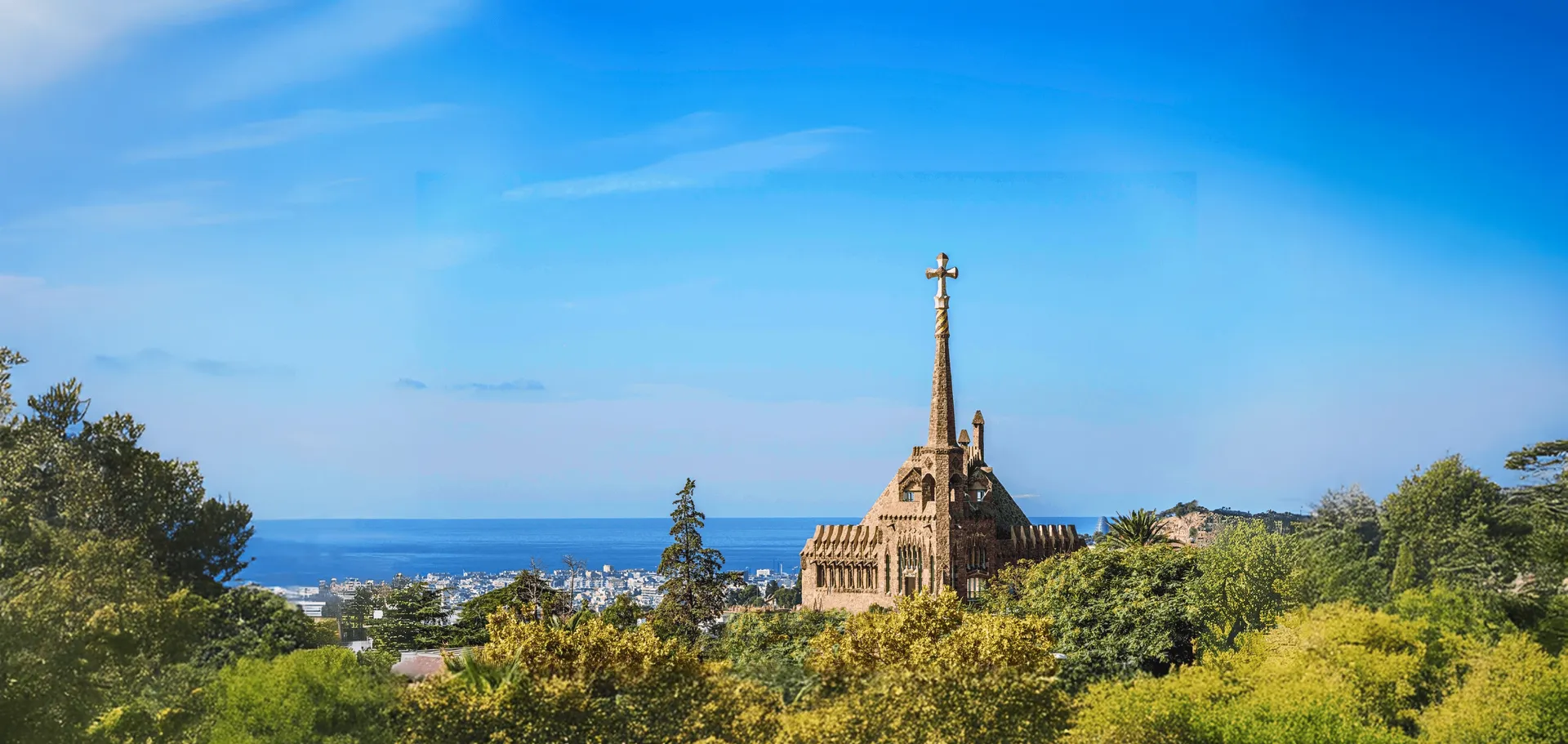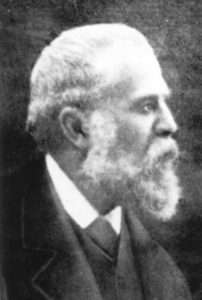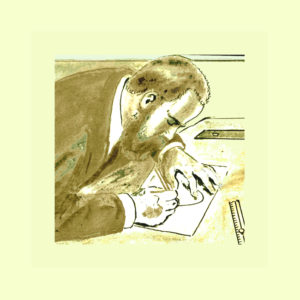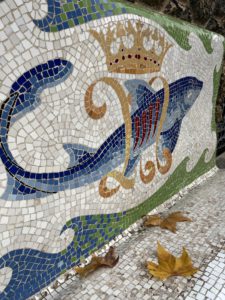September 5, 2025
By Ferran Garcés
September is the month of the grape harvest. The regions fill with activities related to viticulture to celebrate the beginning of the long process that takes grapes from the field to the bottle of wine, cava, vermouth, mistela… Since ancient times, art and popular culture have been full of representations of this transformation. One of them is the image for the month of September in one of the most famous books of the Middle Ages: Les Très Riches Heures du Duc de Berry (“The Very Rich Hours of the Duke of Berry”). It began in 1412, just two years after the death of Martin I the Humane, the builder of the old palace of Bellesguard.
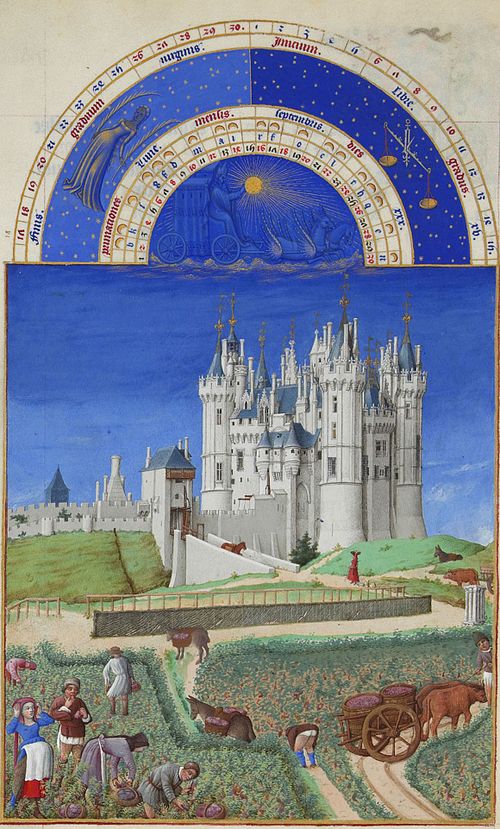
Les Très Riches Heures du Duc de Berry, Folio 9, verso: September. Authors: the Limbourg brothers, Barthélemy d’Eyck, and Jean Colombe. Between 1412 and 1486. Source: Wikipedia.
In the image, we see five figures harvesting grapes while a peasant eats a bunch, and a peasant woman, apparently pregnant, rests. The grapes are placed in baskets, which are later emptied into saddlebags attached to mules. These are then poured into vats loaded onto carts pulled by oxen. The scene takes place in front of a French castle, that of Saumur, but it could just as easily be set at the old palace of Bellesguard or the tower raised by Gaudí five centuries later…
The Harvest of a King, 1409
Shortly after settling in 1409, King Martin I the Humane requested the commander general of Caspe, in the Spanish province of Zarragoza, to send vine cuttings suitable for transplanting into the garden of his palace at Bellesguard (1). On the other hand, the land already had some vineyards, as the palace had been built from a manor house that King Martin I had acquired a year earlier. The purchase contract specified that the property included: “All its honors and possessions, vineyards, fields and other lands, both cultivated and uncultivated, flat mountains with olive trees, an enclosed garden with a house, water for irrigation on certain days, and wine vats” (2).
The sale was managed by Joan Fiveller, a counselor famous for discovering a water spring in Collserola, which he channeled to the city of Barcelona (3). There was also another spring on the Bellesguard property, which has survived to this day. Moreover, the current Bellesguard street, until the late 19th century, was a stream, which forced Gaudí to build a viaduct as well as a well in the shape of a dragon (see: Water, the Secret Protagonist of Bellesguard). In the following photo, we can see the vineyards in front of the viaduct under construction in 1908.
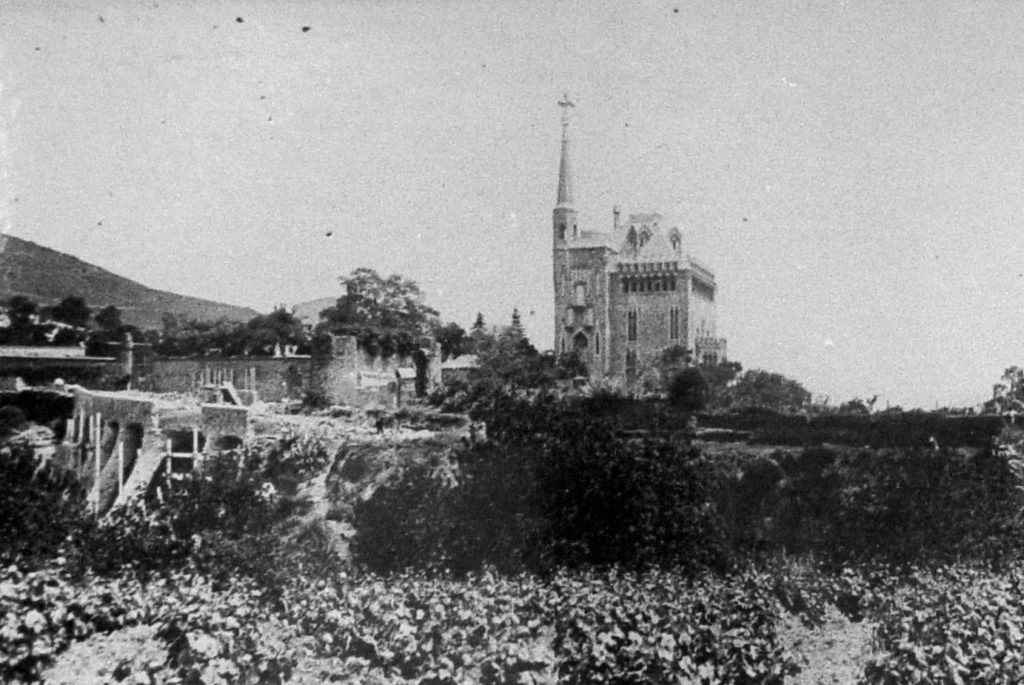
Construction of the viaduct with vineyards. Source: Blog “Las piedras de Barcelona”.
The Harvest of an Architect, 1909
The production of vines and fruit trees, together with wheat and other legumes, was maintained over the centuries, with greater or lesser intensity, throughout the demarcation of the parish of Sant Gervasi until the time of Gaudí. In fact, it was the presence of this vine that transformed the surrounding landscape, especially from the 18th century, during the time of Joan Gualbes, another important owner of Bellesguard, and the concession he made to the community of the Basilica of Sants Just i Pastor, the following owners until well into the 19th century (3)
We’ve seen part of the Bellesguard sale contract from 1408. Now let’s look at what the sale ad for the Tower said in La Vanguardia on August 18, 1925. It reads: “full of varied and tasty fruit trees, diverse vineyards, olive trees, orchards, etc., in full production” (4).
The photographers who documented the transformation of the ruins of the old palace into Gaudí’s tower also indirectly captured the surviving vineyards in their images. It’s a pity they didn’t last until today. We could now be selling Bellesguard-branded wine and cava…
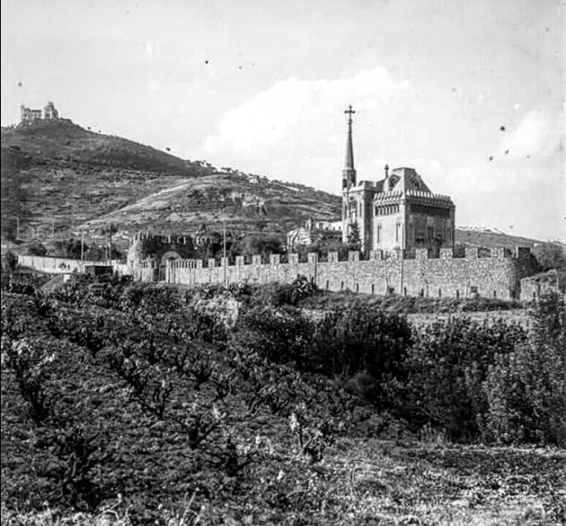
Bellesguard Stream and Vineyard Area, c. 1903. Unknown author. CEC.
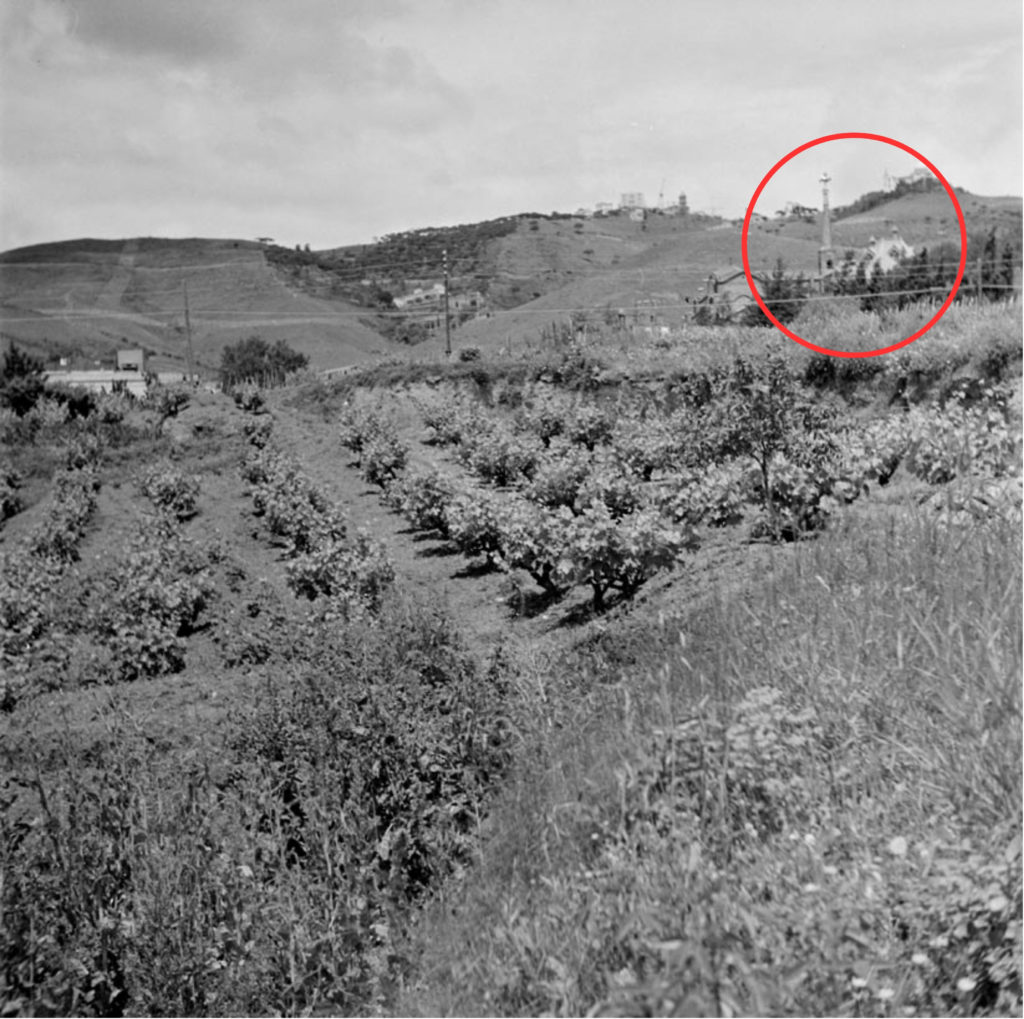
View of vineyards in front of the Bellesguard tower, May 10, 1946. National Archive of Catalonia, Joaquim Gomis collection.
Notes
(1) For a full transcription of the letter, see: Vall i Comaposada, Josep M. (2015), Bellesguard. From the Residence of Martin the Humane to Gaudí’s Tower, Duxelm editorial, pp. 144–145. For context, pp. 51–52.
(2) Galindo López, Esteban (2020), “Analysis of the Historical Landscape in the Northern Area of the Barcelona Plain, 15th to 18th Centuries: Bellesguard”, University of Barcelona, pp. 43–45, and p. 276
(3) Ibid., p. 214-240
(4) Editorial, “A Gaudí Work for Sale in 1925”, Antonio Gaudí Foundation website

